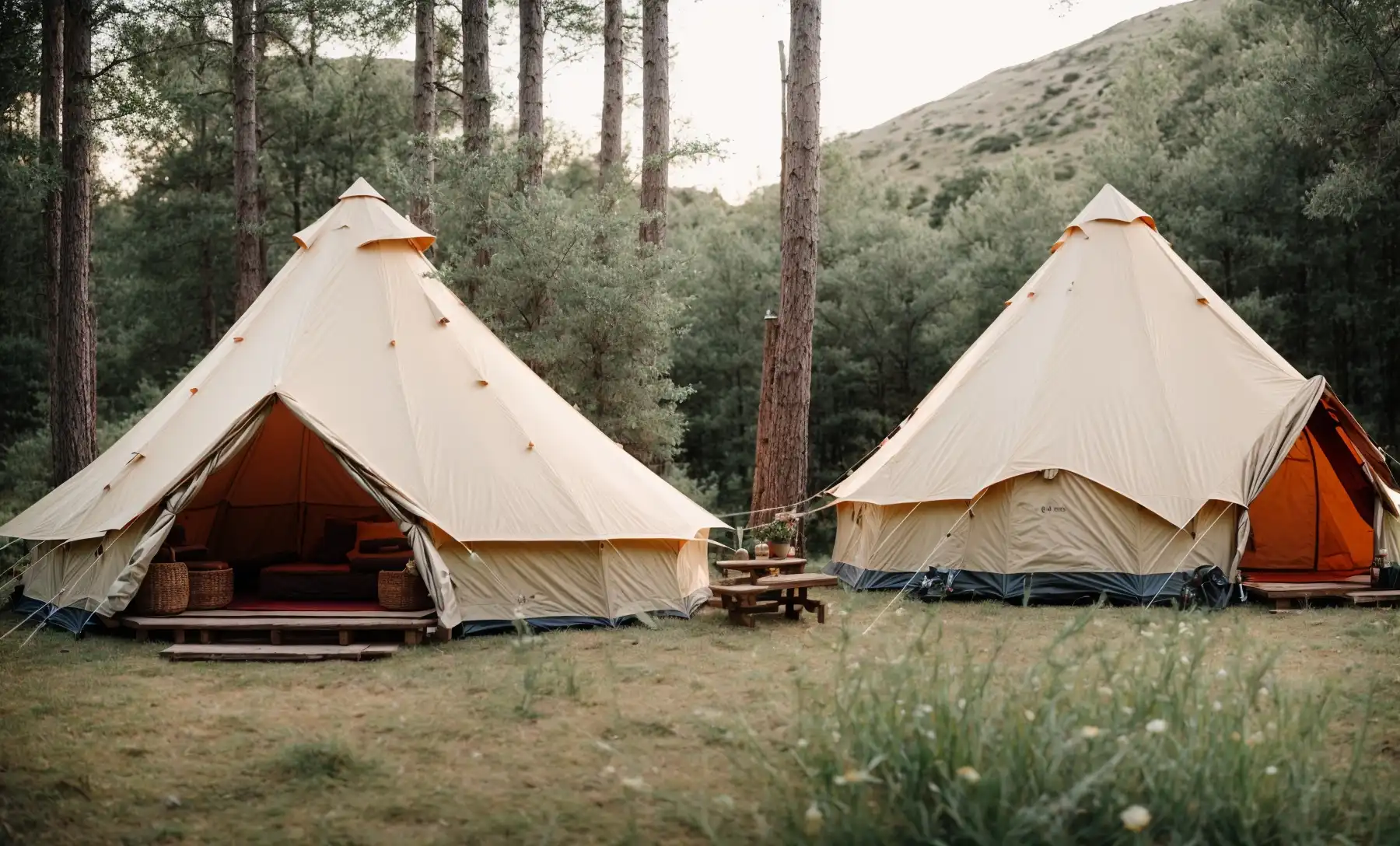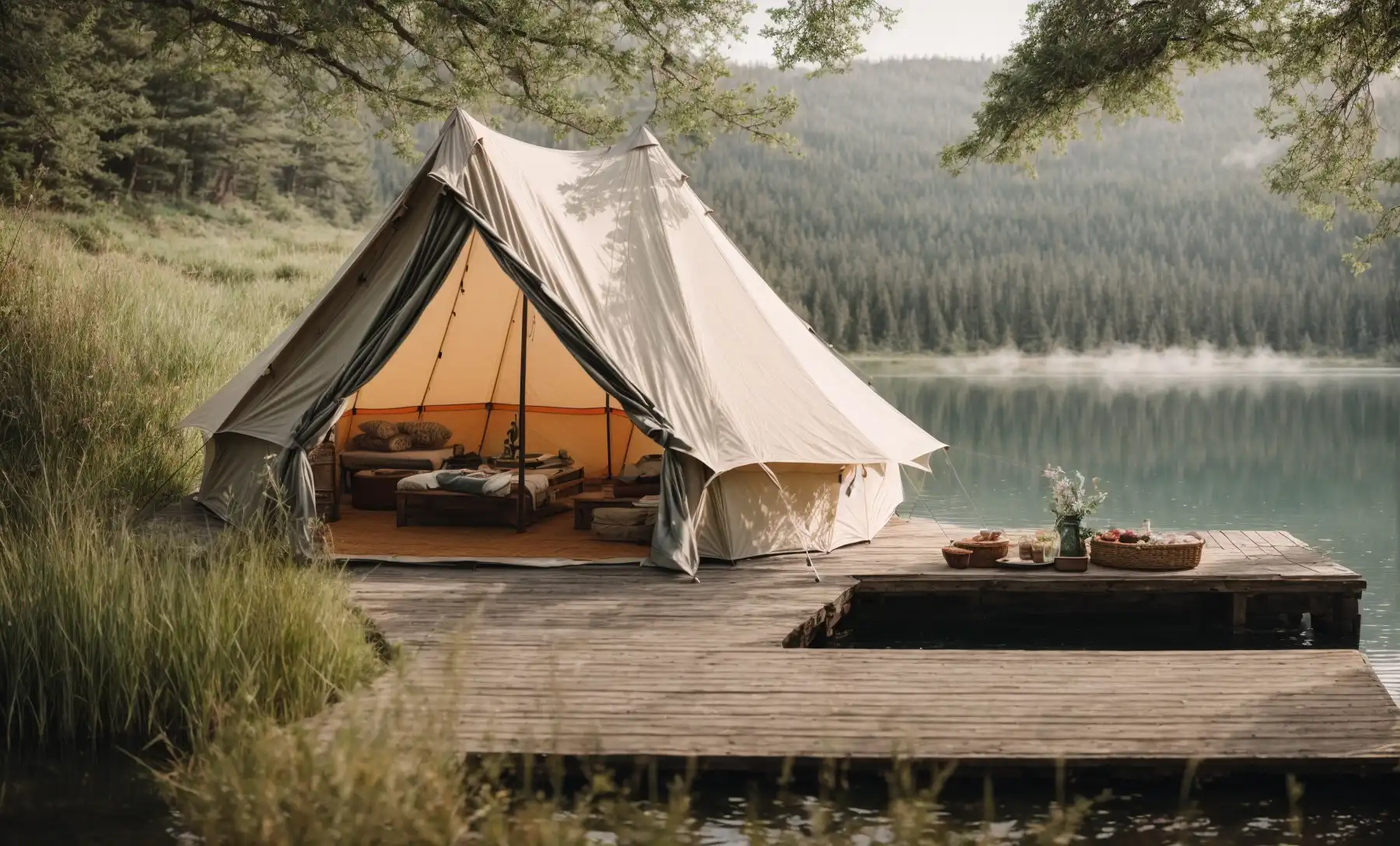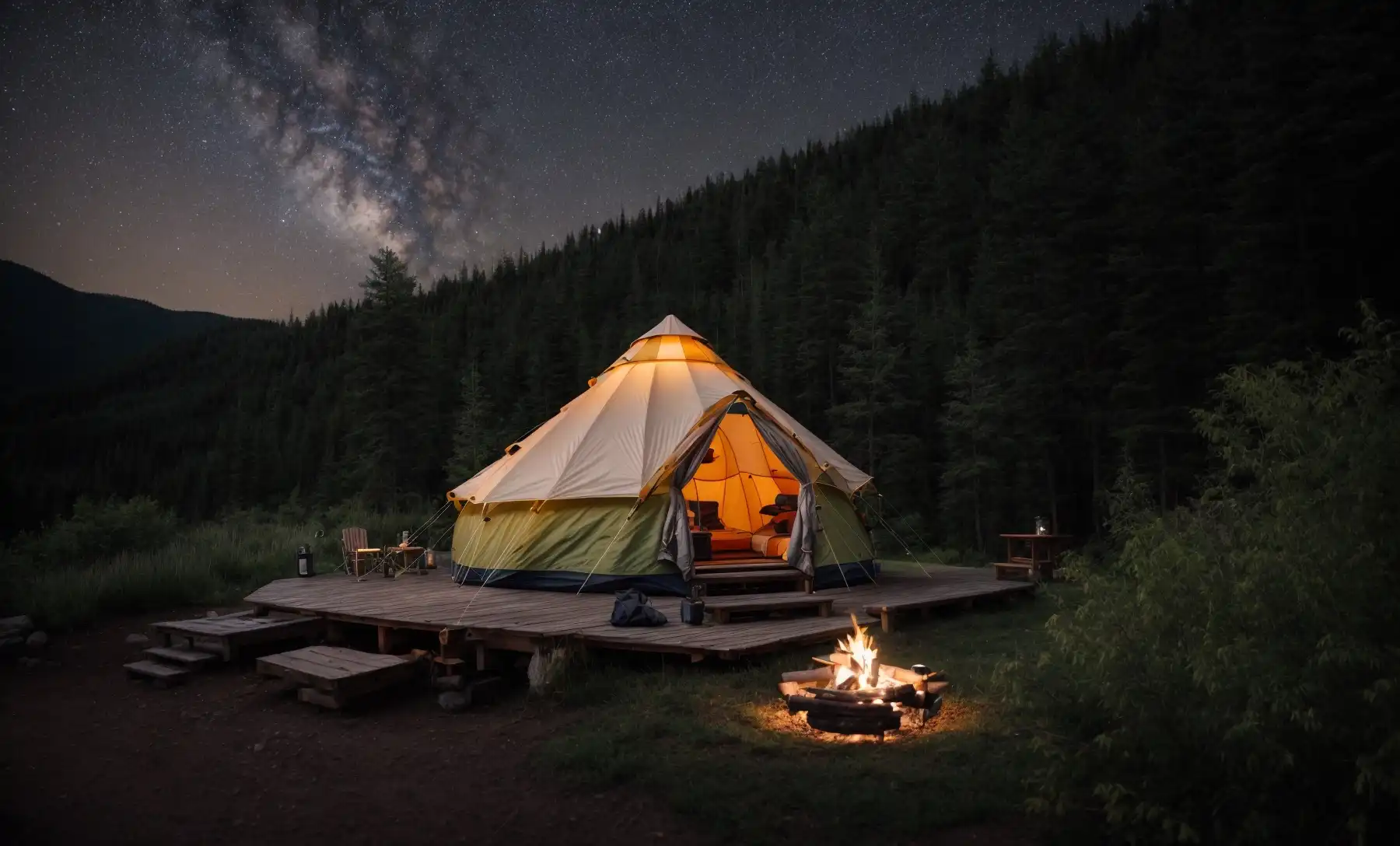Bell tents and yurts differ in structure and setup; the bell tent offers a simpler assembly while yurts provide a sturdier build. Consumers opt for bell tents due to their portability, while yurts are favored for semi-permanent stays.
Exploring the world of canvas shelters reveals the rising popularity of bell tents and yurts among outdoor enthusiasts. Bell tents charm campers with their iconic silhouette and easy-to-erect design, making them a top choice for festivals and weekend getaways. Yurts, with their robust frames and spacious interiors, cater to those seeking a more homelike environment in the great outdoors.
Both structures boast a unique blend of comfort and intimacy with nature, but their applications vary significantly. As glamping becomes the new go-to for luxury campers, the debate intensifies around which is better suited for the ultimate outdoor experience. Deciding between the two may hinge on the duration of stay, the terrain, and the level of comfort desired.
Understanding the Bell Tents and Yurts
Imagine sleeping under the stars with all the comforts of home. This dream comes true with glamping. Today, we explore two beloved glamping structures: the bell tent and the yurt. These dwellings blend luxury and nature, creating an unforgettable outdoor experience.

Defining Glamping and Its Rise in Popularity
Glamping, a blend of ‘glamorous’ and ‘camping’, elevates traditional camping. It stands for comfort and style in the outdoors. High-quality tents, real beds, and lovely furniture replace sleeping bags on the ground. Glamping has gained fans worldwide who love nature without the rough edges.
Brief History of Bell Tents and Yurts
The bell tent, with its iconic shape, comes from military designs of the 19th century. It has a central pole and canvas exterior. Yurts, round tents, have roots in Central Asia. Nomads there have used them for thousands of years. Both are cherished for their durability and ease of use.
The Resurgence of Traditional Structures in Modern Camping
Modern campers embrace bell tents and yurts for their unique charm. They offer a retreat into nature without leaving behind modern comforts. Crafted with love and care, these structures remind us of simpler times yet cater to contemporary needs.
Design Aspects: Bell Tent Vs Yurt
Choosing between a bell tent and a yurt can feel like selecting between a classic novel and a modern bestseller. Each shelter boasts unique features that set them apart. Below, we unravel the design aspects of both structures. We delve into architectural details, materials used, and their adaptability to different climates. This comparison will illuminate the perfect outdoor dwelling for your next adventure.
Architectural Overview of Bell Tents
Bell tents showcase a distinctive circular design. A central pole supports the peak, while auxiliary poles stretch out the canvas walls. This format does the following:
- Provides a spacious interior with ample headroom
- Enables quick setup and takedown
- Makes for a lightweight structure, easy to carry
Their round shape is not just aesthetic but functional, shedding wind and rain effectively.

Structural Insights Into Yurts
Yurts stem from ancient nomadic cultures. A wooden frame crafted from lattice walls and roof poles define their structure. Key advantages include:
- Strong resistance against harsh weather
- Spacious interiors, ideal for longer stays
- Customizable features, such as insulation or windows
Traditional charm and robust engineering make yurts a favorite for many campers.

Material Choices and Durability in Different Climates
| Aspect | Bell Tent | Yurt |
|---|---|---|
| Materials | Canvas or polyester | Canvas, felt insulation |
| Durability | Resistant to UV light, water, and mildew | Sturdy in snow, wind, and rain |
| Climate Suitability | Best for mild to warm, drier regions | Adaptable to intense cold or warmth with proper setup |
Bell tents offer simpler fabric options while yurts can include heavier materials for insulation. The climate plays a pivotal role in determining which shelter holds up better against the elements.
Set-up and Portability: Bell Tent Vs Yurt
Choosing between a bell tent and a yurt often boils down to setup ease and portability. Both options offer unique experiences, but their setup times and mobility vary. This is a must-read if campers love to roam.
Time and Effort Involved in Setting up Bell Tents
Bell tents are known for their simple assembly. Here is what to expect:
- Layout the tent and insert the center pole.
- Add the door frame.
- Hammer in the ground stakes.
- It takes roughly 20 minutes.
Most bell tents fit in a single bag and can be set up by one person. Quick setup makes bell tents a top pick for solo adventures or smaller groups.
Yurt Assembly Process and Required Manpower
Yurts require more steps:
- Build the lattice walls.
- Connect the roof supports.
- Place the central dome.
- Cover with the canvas.
Assembling a yurt often needs multiple people and can take a few hours. The durable structure is ideal for longer stays.
Comparative Portability: Which Is Better For Nomadic Lifestyles?
| Bell Tent | Yurt |
|---|---|
| Lighter materials, easy to transport. | Heavier, bulkier, suited for semi-permanent setups. |
| One carrying bag for most tents. | Several large pieces to move. |
| Ideal for frequent moves. | Best for static sites needing minimal relocation. |
In summary, bell tents score higher in portability, favored by campers on the go. Yurts are more stationary, suitable for long-term encampments.
Also learn: Bell Tent Vs Wall Tent
Space and Comfort: Analyzing the Interior of Bell Tents vs Yurts
Choosing between a bell tent and a yurt often comes down to their interiors. How much space do you need? What level of comfort do you prefer? This comparison will explore the interior attributes of bell tents and yurts, focusing on space utilization, comfort, and customization.
Space Utilization and Floor Plans
Both bell tents and yurts offer ample living space but their floor plans differ significantly. Bell tents often have a circular design maximizing floor space while yurts provide more vertical walls creating a spacious feel.
- Bell tents – Central pole with sloping sides.
- Yurts – Taller walls, circular structure.
This design influences how furniture is arranged, with yurts allowing for full-height furniture near the walls.
Insulation and Weather Resistance For Comfortable Living
Keeping warm and dry is vital when living in either structure. Bell tents and yurts have different insulation capabilities and resistance to weather conditions.
| Bell Tent | Yurt |
|---|---|
| – Single-layered canvas – Good for mild conditions | – Insulated walls – Withstands diverse climates |
Modern materials upgrade both structures for better weatherproofing.
Customization Options and Add-ons For Enhanced Experience
Personal touches make a space feel like home. Bell tents and yurts offer varying customization options.
- Bell tents can have zip-in floors, color choices, and window placements.
- Yurts provide options for skylights, doors, and built-in storage.
Each structure allows for a personalized setup to cater to your lifestyle.
Cost Considerations and Longevity: Assessing the Investment
Choosing between a bell tent and a yurt requires a close look at finances and durability. This section dives into the costs attached to both structures and their lifetime value. Make an informed choice by understanding the initial expense, upkeep, and potential for recouping your investment.
Initial Investment: Price Range of Bell Tents Vs Yurts
Both bell tents and yurts come with differing price tags.
- Bell tents often range from $500 to $2000, influenced by size and fabric.
- Yurts are pricier, starting around $4000 and can climb to $30,000 for luxury options.
The choice hinges on budget. Bell tents suit tight budgets. Yurts demand more upfront but offer a unique experience.
Maintenance Costs and Efforts
Keeping your outdoor shelter in prime condition is vital.
| Shelter Type | Maintenance Needs | Annual Cost |
|---|---|---|
| Bell Tent | Cleaning, waterproofing | $100 – $300 |
| Yurt | Platform repair, fabric treatment | $300 – $800 |
Bell tents may need less maintenance. Yurts could have higher upkeep costs due to size and complexity.
Long-term Value and Resale Possibilities
The resale market reflects the life span of shelters.
- Bell tents, well-maintained, keep 50-70% of their value over 5 years.
- Yurts can retain up to 60-85% over a decade.
Durable materials and timeless design aid resale for yurts. Bell tents tend to appeal more to casual campers and festival-goers. Evaluate your usage plans to gauge which offers better long-term value.
Conclusion
Choosing between a bell tent and a yurt ultimately depends on personal needs and style preferences. Both offer distinct experiences in outdoor living with their own pros and cons. Carefully assess your camping requirements and aesthetic desires before making a decision.
Step into the world of adventure with Outdoor Awaits. Our Outdoor Pursuits Comparison is the first step to your next big outdoor story.
Sukhen is a passionate blogger and traveler who visited many historical places in Bangladesh, Myanmar, India, and Thailand. He's an avid camper, so he shares his knowledge of camping and wildlife with his readers. He also helps readers plan their own camping trips. To know more, stay connected with Outdoor Awaits.

